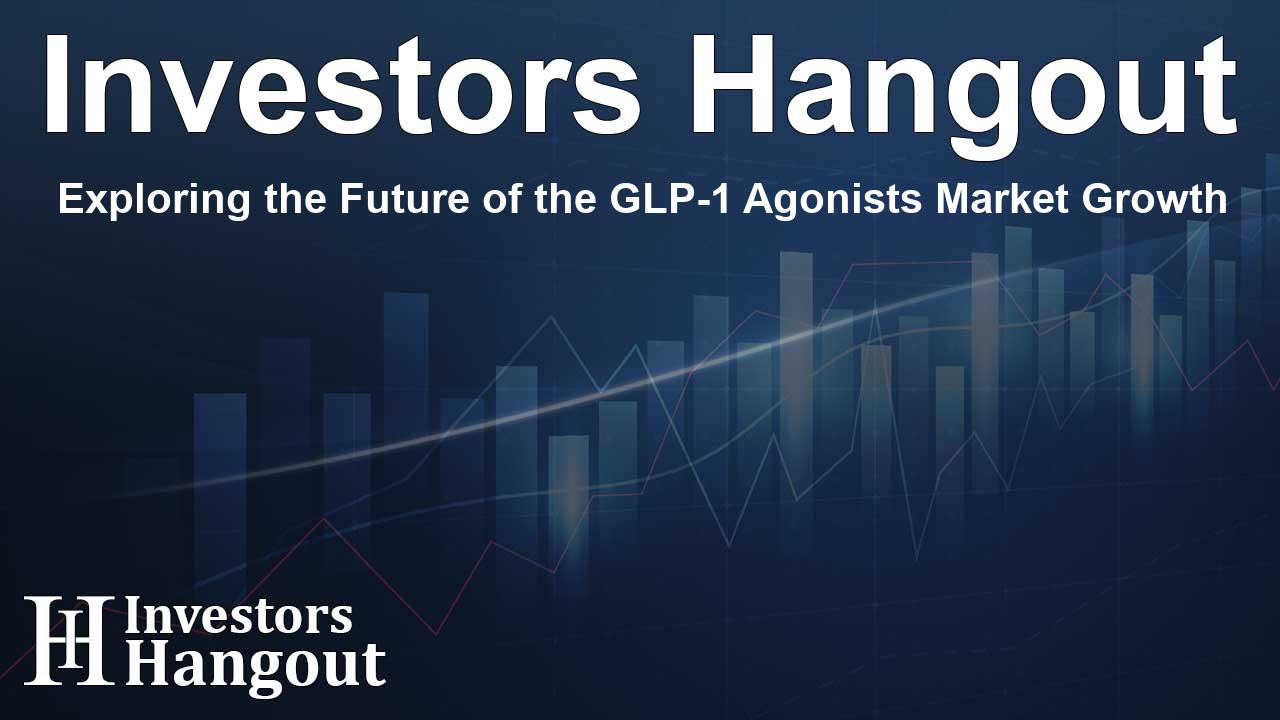Exploring the Future of the GLP-1 Agonists Market Growth

Overview of the GLP-1 Agonists Market
The global GLP-1 Agonists market is experiencing remarkable growth, with its value forecasted to rise to $170.75 billion by the end of the forecast period. This represents a strong compound annual growth rate (CAGR) of 13.0% from the previous years. The driving factors behind this growth include manufacturing expansions and increased patient access to various metabolic and cardiovascular therapies.
Market Segmentation Analysis
The GLP-1 Agonists market is categorized into several segments, primarily focusing on diabetes, obesity, and other conditions. The diabetes segment currently leads the market, largely due to the extensive benefits these medications provide in controlling blood sugar levels and promoting weight loss.
Diabetes Segment Dominance
In recent years, GLP-1 agonists have gained significant traction in diabetes care, thanks to their ability to effectively manage glycemic levels and mitigate cardiovascular risks. This established drug class home gains from growing patient populations and positive clinical adoption, ensuring that diabetes continues to remain the primary focus within the GLP-1 market.
Administration Routes
When examining routes of administration, the GLP-1 Agonists can be delivered subcutaneously or orally, with subcutaneous injections holding a dominant market share. This preference can be linked to their proven efficacy and patient-friendly delivery approach, which enhances adherence and the overall treatment experience.
Regional Growth Insights
From a geographical perspective, the GLP-1 Agonists market is segmented into regions, including North America, Europe, Asia Pacific, Latin America, the Middle East, and Africa. The Asia Pacific region is projected to showcase the highest growth rate, attributed to the escalating occurrences of obesity and diabetes. Moreover, advancements in healthcare reimbursement and regulatory frameworks contribute to rapid adoption of these innovative therapies.
Major Players in the Market
The GLP-1 Agonists market is highly competitive, featuring leading players like Novo Nordisk, Eli Lilly, and Sanofi. These companies are actively expanding their product portfolios and manufacturing capabilities to meet increasing global demand.
Novo Nordisk's Innovations
Novo Nordisk stands at the forefront of this sector, known for its impactful contributions to metabolic disease solutions, particularly through its flagship GLP-1 agonists such as semaglutide. Their commitment to research and development is evident as they explore new applications including cardiovascular disease management and chronic kidney disease treatments.
Eli Lilly's Strategic Position
Another significant player is Eli Lilly, known for its dual agonist tirzepatide, which has enhanced their market position in the growing obesity and diabetes segments. Their efforts in oral delivery solutions aim to reduce barriers for patients preferring non-injection methods, thus broadening their customer base.
Sanofi's Unique Approach
Sanofi is paving its path to success with the development of combination therapies like Soliqua, which integrates insulin and GLP-1 therapy, simplifying diabetes management. Their global distribution strategy highlights a commitment to expanding access, particularly in emerging markets.
Conclusion
The GLP-1 Agonists market is primed for extensive growth driven by innovation, increased patient access, and a growing understanding of metabolic disorders. Companies within this sector must continue to adapt to changing healthcare environments and patient needs to stay competitive in this dynamic market.
Frequently Asked Questions
What is the projected value of the GLP-1 Agonists market by 2033?
The GLP-1 Agonists market is projected to reach $170.75 billion by 2033.
Which segment dominates the GLP-1 Agonists market?
The diabetes segment currently dominates the GLP-1 Agonists market due to its efficacy in glycemic control.
What are the main routes of administration for GLP-1 Agonists?
GLP-1 Agonists can be administered subcutaneously or orally, with subcutaneous administration being the most common.
How is the GLP-1 Agonists market segmented geographically?
The market is segmented into North America, Europe, Asia Pacific, Latin America, the Middle East, and Africa, with the Asia Pacific region expected to see the highest growth rate.
Who are the key players in the GLP-1 Agonists market?
Key players include Novo Nordisk, Eli Lilly, and Sanofi, all of which are strategizing to expand their offerings and meet market demand.
About The Author
Contact Dominic Sanders privately here. Or send an email with ATTN: Dominic Sanders as the subject to contact@investorshangout.com.
About Investors Hangout
Investors Hangout is a leading online stock forum for financial discussion and learning, offering a wide range of free tools and resources. It draws in traders of all levels, who exchange market knowledge, investigate trading tactics, and keep an eye on industry developments in real time. Featuring financial articles, stock message boards, quotes, charts, company profiles, and live news updates. Through cooperative learning and a wealth of informational resources, it helps users from novices creating their first portfolios to experts honing their techniques. Join Investors Hangout today: https://investorshangout.com/
The content of this article is based on factual, publicly available information and does not represent legal, financial, or investment advice. Investors Hangout does not offer financial advice, and the author is not a licensed financial advisor. Consult a qualified advisor before making any financial or investment decisions based on this article. This article should not be considered advice to purchase, sell, or hold any securities or other investments. If any of the material provided here is inaccurate, please contact us for corrections.
